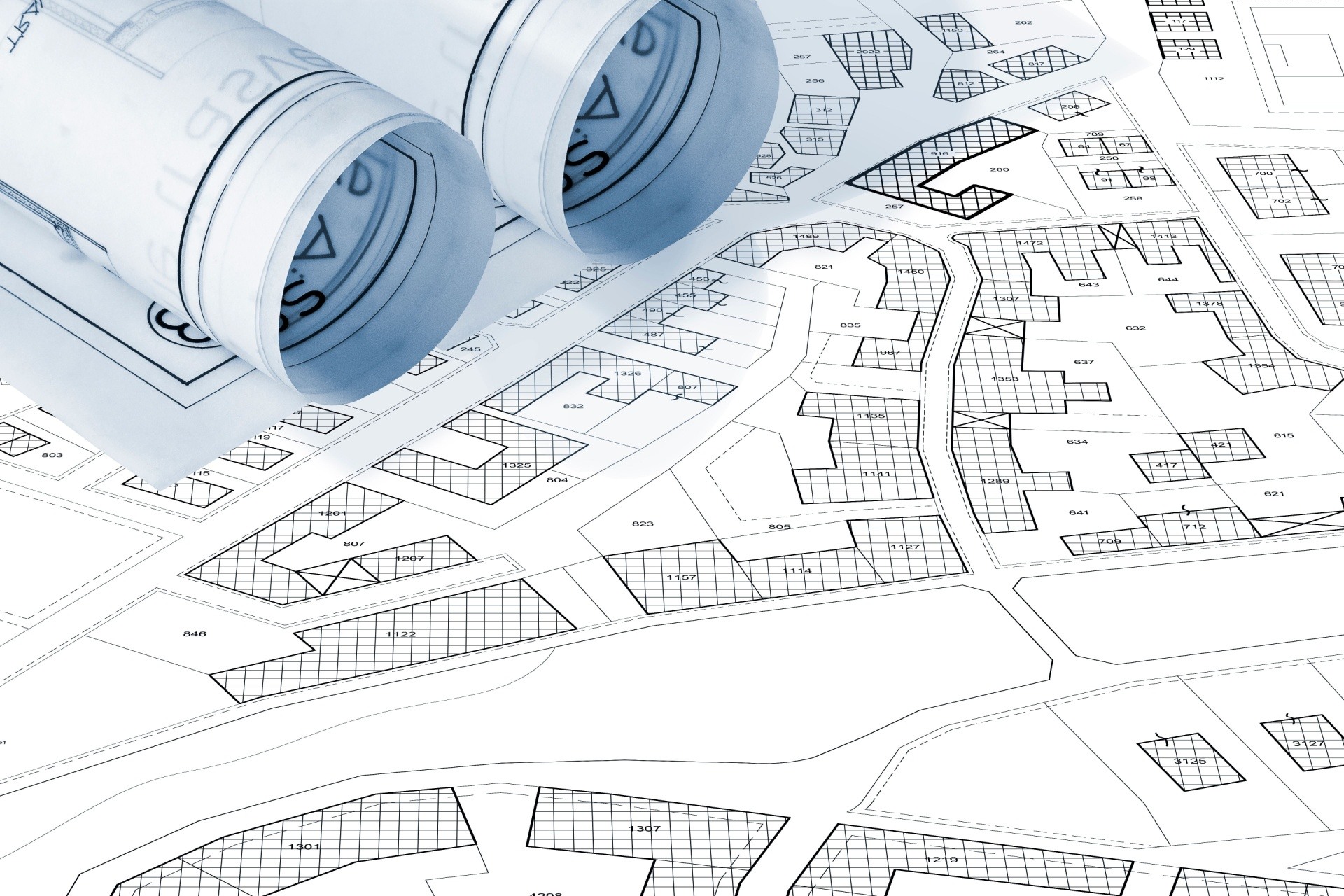
- Development Finance

Matthew Robineau
Aug 21, 2024 5:28:09 PM · 7 min read
Updated on August 21, 2024
Find it Fast:
What Is Gross Development Value (GDV) Explained For The UK
Understanding the intricacies of property development can be daunting, but grasping the concept of Gross Development Value (GDV) is crucial for success.
Thankfully, this blog will break down its meaning in the common applications, how it is calculated and the common mistakes made when calculating it.
What is Gross Development Value
Gross Development Value (GDV) is a pivotal metric in the realm of property development, finance, and real estate. It represents the estimated value of a property or development project upon completion, encompassing all potential revenue streams.
Understanding GDV is essential for investors, developers, and financial analysts as it influences decision-making and project viability.
Let's delve into the three main applications of GDV to see how it shapes different sectors.
What is GDV in Property?
In property development, GDV is the cornerstone for assessing the profitability of a project. It calculates the total market value of a development once all units are sold or leased.
This figure is crucial for developers to determine whether a project is financially viable and to secure property development finance from lenders. By estimating the GDV, developers can forecast potential returns and make informed decisions about land acquisition, construction costs, and marketing strategies.
What is GDV in Finance?
In the financial sector, GDV serves as a critical indicator for evaluating the potential success of property investments. Financial analysts use GDV to assess the risk and return profile of development projects.
It helps in structuring loans, determining interest rates, and setting investment thresholds. By understanding GDV, financial institutions can better manage their portfolios, mitigate risks, and maximise returns on property-related investments.
What is GDV in Real Estate?
For real estate professionals, GDV is a fundamental metric for appraising the future value of properties. It aids in setting realistic price expectations and developing effective sales strategies.
Real estate agents and brokers rely on GDV to advise clients on the best investment opportunities and to negotiate favourable deals.
By leveraging GDV, they can provide accurate market insights and enhance their clients' investment outcomes.
How to Calculate Gross Development Value
Calculating Gross Development Value (GDV) involves a series of detailed steps to ensure an accurate estimation of a property's potential market value upon completion.
Here's a breakdown of the complex calculations involved:
Step 1: Determine the Total Saleable Area
First, calculate the total saleable area of the development. This includes all units, whether residential, commercial, or mixed-use. Measure the gross internal area (GIA) for each unit and sum them up to get the total saleable area.
Step 2: Estimate the Market Value per Unit
Next, research the current market value per square metre or per unit type in the area where the development is located. This involves analysing recent sales data, market trends, and comparable properties. Adjust for factors such as location, amenities, and property condition.
Step 3: Calculate the Gross Revenue
Multiply the total saleable area by the estimated market value per unit. This gives you the gross revenue, which is the total income expected from selling or leasing all units in the development.
Gross Revenue = Total Saleable Area × Market Value per Unit
Step 4: Include Additional Revenue Streams
Consider any additional revenue streams that the development might generate. This could include parking spaces, storage units, or commercial leases. Estimate the value of these additional elements and add them to the gross revenue.
Step 5: Account for Development Costs
While not directly part of the GDV calculation, it's essential to account for all development costs to understand the project's profitability. These costs include land acquisition, construction, professional fees, marketing, and financing costs.
Step 6: Adjust for Market Conditions
Adjust the calculated GDV based on current and projected market conditions. This includes considering economic factors, demand and supply dynamics, and potential changes in property values over the development period.
Step 7: Final GDV Calculation
Sum up the gross revenue from all units and additional revenue streams to arrive at the final GDV. This figure represents the estimated total market value of the development upon completion.
GDV = Gross Revenue + Additional Revenue Streams
By following these steps, you can derive a comprehensive and accurate Gross Development Value, providing a solid foundation for making informed investment and development decisions.
Gross Development Value Example
To illustrate how to calculate Gross Development Value (GDV) for a property development site, let's consider an example where a developer is selling 50 new homes to different buyers.
Project Details
- Number of Homes: 50
- Average Market Value per Home: £400,000
- Additional Revenue Streams:
- Parking Spaces: £100,000
- Community Facilities: £150,000
Step-by-Step Calculation
Step 1: Determine the Number of Homes
The development site includes 50 new homes.
Step 2: Estimate the Market Value per Home
The average market value per home is £400,000.
Step 3: Calculate the Gross Revenue
Multiply the number of homes by the average market value per home:
Gross Revenue = 50 homes × £400,000 per home = £20,000,000
Step 4: Include Additional Revenue Streams
Add the value of additional revenue streams:
- Parking Spaces: £100,000
- Community Facilities: £150,000
Total Additional Revenue Streams = £100,000 + £150,000 = £250,000
Step 5: Account for Development Costs
While not directly part of the GDV calculation, it's important to note that development costs will need to be subtracted from the GDV to determine profitability. For this example, we'll focus solely on calculating the GDV.
Step 6: Adjust for Market Conditions
Assume no adjustments are needed for this example.
Step 7: Final GDV Calculation
Sum up the gross revenue and additional revenue streams to arrive at the final GDV:
GDV = Gross Revenue + Additional Revenue Streams
GDV = £20,000,000 + £250,000 = £20,250,000
Conclusion
The Gross Development Value for this property development site selling 50 new homes is £20,250,000.
This figure represents the estimated total market value of the development upon completion, providing a crucial metric for assessing the project's potential profitability.
Key Factors That Influence Gross Development Value
Several key factors influence the Gross Development Value (GDV) of a property development project.
1. Location
The location of the development significantly impacts its market value. Proximity to amenities, transport links, schools, and employment hubs can enhance the desirability and value of the property.
2. Market Conditions
Current and projected market conditions, including supply and demand dynamics, economic trends, and interest rates, play a crucial role in determining property values.
3. Property Type and Quality
The type of property (residential, commercial, mixed-use) and the quality of construction and finishes influence the market value. High-quality developments with modern amenities typically command higher prices.
4. Planning and Zoning Regulations
Local planning and zoning regulations can affect the development potential and permissible uses of the property, thereby impacting its value.
5. Comparable Sales
Recent sales of similar properties in the area provide a benchmark for estimating the market value of the development.
6. Additional Revenue Streams
Revenue from additional elements such as parking spaces, storage units, and commercial leases can enhance the overall GDV.
7. Developer Reputation
The reputation and track record of the developer can influence buyer confidence and willingness to pay a premium for the property.
8. Future Growth Potential
Areas with strong future growth potential, driven by infrastructure projects, economic development, or urban regeneration, can see higher property values.
9. Marketing and Sales Strategy
Effective marketing and sales strategies can maximise the value achieved for each unit, thereby increasing the overall GDV.
By considering these key factors, developers and investors can more accurately estimate the Gross Development Value and make strategic decisions to optimise their returns.
GDV vs. Market Value vs. Total Development Cost: Understanding the Differences
In property development, it's crucial to distinguish between Gross Development Value (GDV), Market Value, and Total Development Cost.
Each of these metrics serves a unique purpose and provides different insights into the viability & profitability of a project as well as often being necessary information when seeking development financing.
Gross Development Value (GDV)
GDV represents the estimated total market value of a development project upon completion. It encompasses the combined value of all units, whether residential, commercial, or mixed-use, and includes additional revenue streams such as parking spaces and community facilities.
GDV is a forward-looking metric that helps developers and investors assess the potential revenue from a project.
Market Value
Market Value refers to the current value of a property or development in the open market. It is determined by factors such as location, property type, condition, and comparable sales. Unlike GDV, which projects future value, Market Value provides a snapshot of what a property is worth at a specific point in time.
It is a critical metric for buying, selling, and financing properties.
Total Development Cost
Total Development Cost includes all expenses incurred during the development of a project. This encompasses land acquisition, construction costs, professional fees, financing costs, marketing, and sales expenses.
Understanding Total Development Cost is essential for evaluating the financial feasibility of a project and determining its profitability.
Key Differences
- Timeframe: GDV is a future-oriented metric, estimating the value upon project completion. Market Value is a present-day assessment, while Total Development Cost is an ongoing calculation throughout the development process.
- Purpose: GDV helps in forecasting potential revenue and securing financing. Market Value is used for transactions and appraisals, and Total Development Cost is crucial for budgeting and financial planning.
- Components: GDV includes the total saleable value and additional revenue streams. Market Value focuses on the current worth of the property, and Total Development Cost covers all expenses related to development.
Common Mistakes in Estimating GDV
Accurately estimating Gross Development Value (GDV) is crucial for the success of any property development project. However, there are common mistakes that can lead to inaccurate valuations and financial miscalculations. Here are three genuine mistakes often made in estimating GDV:
1. Overestimating Market Values
One of the most frequent errors is overestimating the market values of the units within the development. This can occur due to overly optimistic assumptions about future market conditions, ignoring local market trends, or failing to account for comparable sales data.
Overestimating market values can lead to inflated GDV figures, resulting in unrealistic financial expectations and potential funding issues.
2. Failing to Include All Revenue Streams
Another common mistake is neglecting to include all potential revenue streams in the GDV calculation. This can include additional income from parking spaces, storage units, commercial leases, or community facilities.
Omitting these revenue streams can result in an undervaluation of the GDV, leading to missed opportunities for maximising returns.
3. Neglecting Market Conditions and Trends
Market conditions and trends play a significant role in determining property values. Ignoring factors such as economic cycles, interest rates, and local supply and demand dynamics can lead to inaccurate GDV estimates.
Developers must stay informed about current and projected market conditions to make realistic and informed GDV calculations.
By avoiding these common mistakes, developers and investors can achieve more accurate GDV estimates, leading to better decision-making and more successful property development projects.